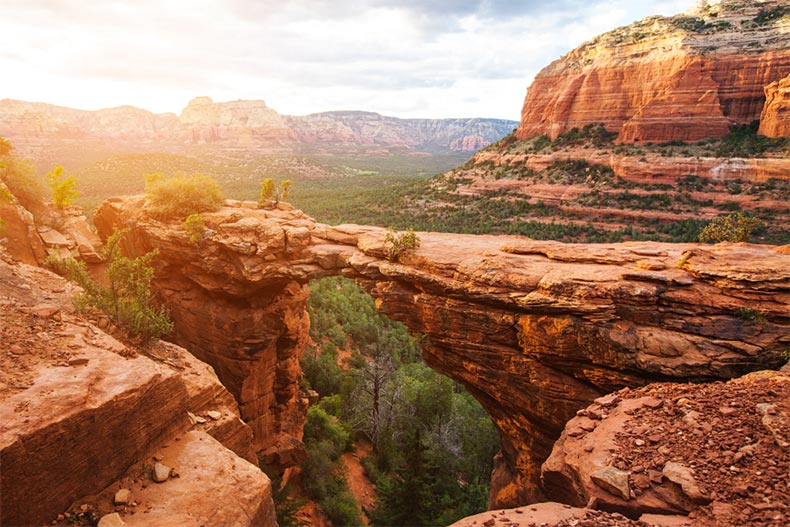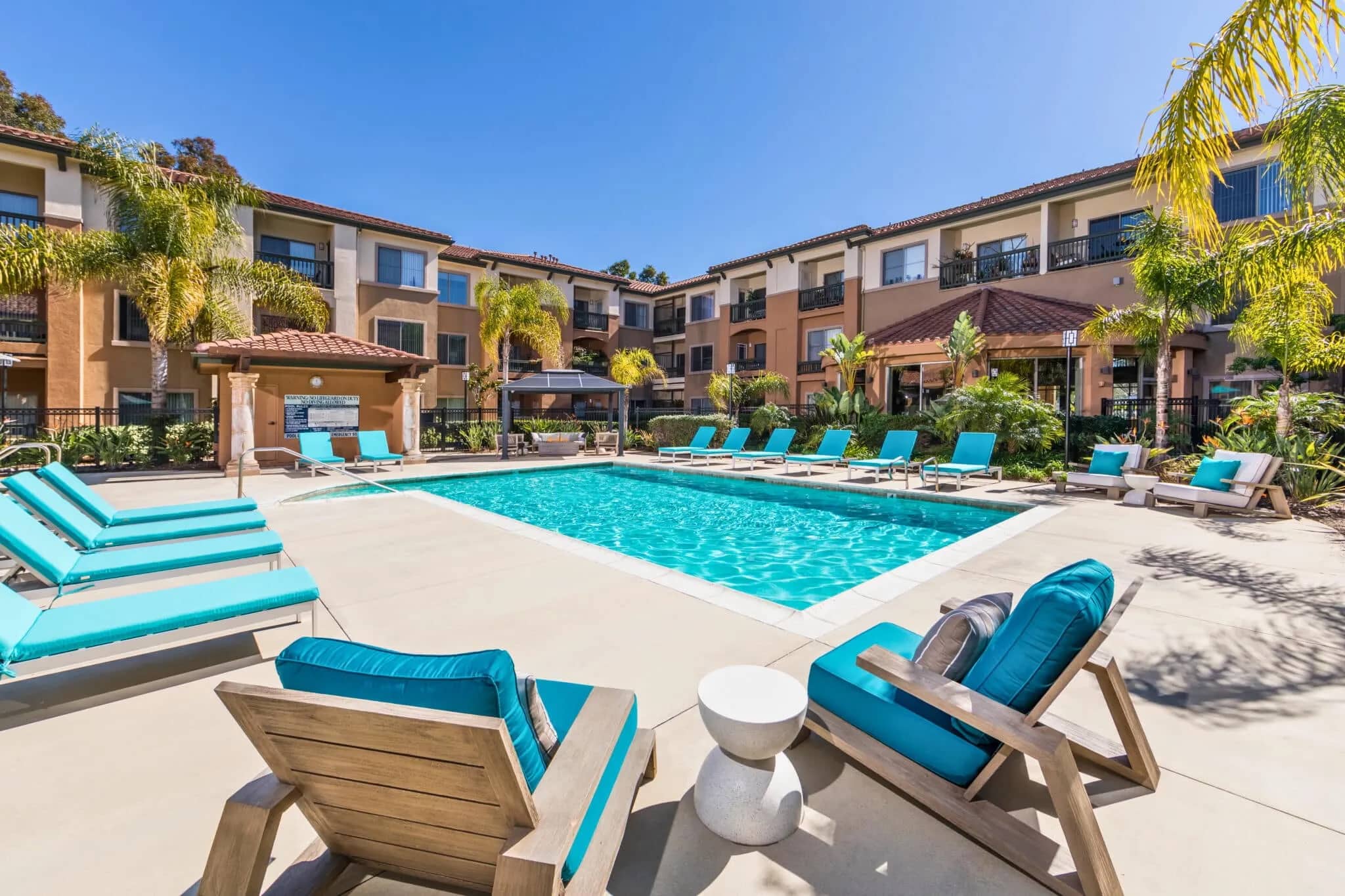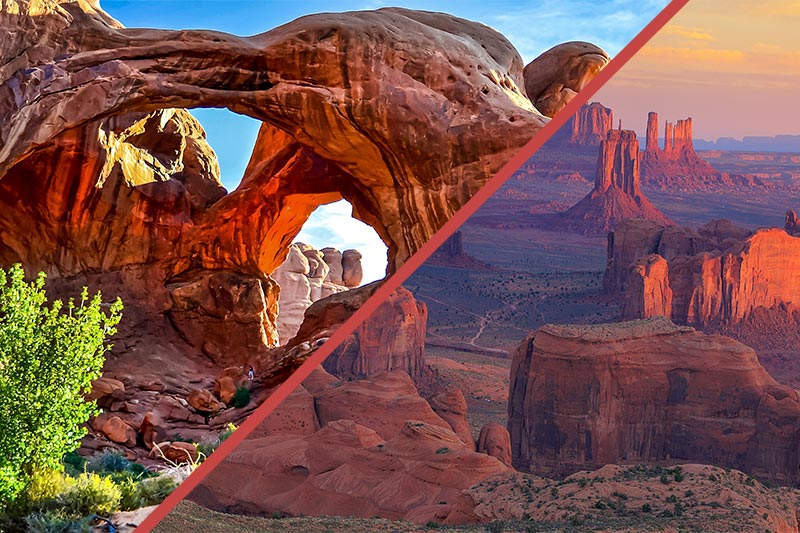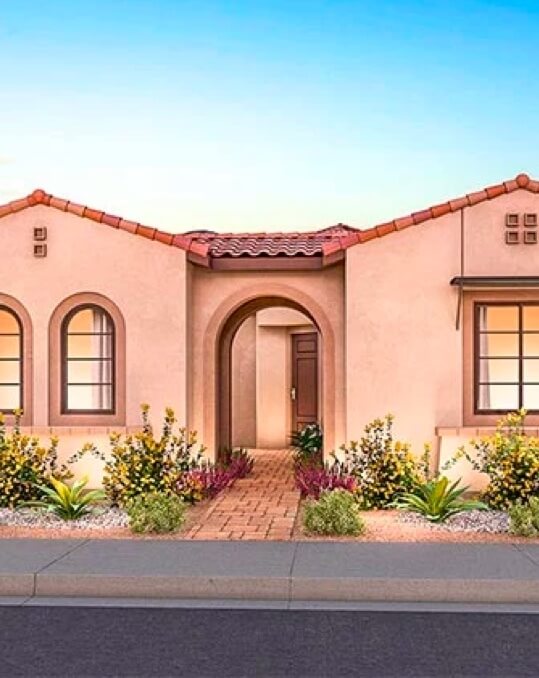Is Arizona a good place to live as a retiree? Yes! The Grand Canyon State competes with Florida and California as one of the most desirable states for retirees, especially those looking for a 55+ active adult community. It’s also no accident that Arizona was chosen as the location for the first retirement community in the U.S. Sun City opened in 1960 and has been going strong ever since!
One of the state’s biggest draws is the climate—you can enjoy golf, hiking, tennis, or pickleball virtually all year round. There are facilities across the state that enable residents to make the most of outdoor recreational opportunities. Also, the state features natural facilities like hiking and riding trails as well as wonderful scenery beneath sunny skies.
If you’re on a budget, Arizona could be the right place for you too! The state scores well when it comes to the cost of living, offering several tax advantages. Also, the popularity of Arizona among retirees means there are excellent medical facilities across the state.
Ready to explore if Arizona is the perfect place for your retirement? Let’s dive into all the benefits this sunny state has to offer and start planning your dream lifestyle today!
Climate and Weather

The most pleasant weather in Arizona is during the spring and the fall. However, the winters are mild, making the state such an attractive place to retire. Anyone who has spent a winter in the Midwest knows what a joy it is to avoid shoveling snow.
Hot Summers and Mild Winters
The extremely hot summers are less appealing, though any discussion of the Arizona climate has to begin by saying: ‘It depends where you live.’ Bear in mind that Arizona is the sixth-largest state in the nation. There’s a world of difference between somewhere like Flagstaff in the north, and the valley that holds Phoenix and its urban neighbors. It’s not quite as extreme as Death Valley, but Phoenix is still the hottest city in the United States. However, this means the city gets more sunshine than any other major city on the planet.
Phoenix has on average over 100 days annually with a high of at least 100 degrees, and the highest temperature recorded was 122 degrees in 1990. However, recent years have been breaking records for the number of days seeing temperatures in the hundreds, so if you want to live anywhere in the Valley of the Sun, summer heat has to be a consideration. If you want to live in a place with four seasons and mild snowfall, choose somewhere in Northern Arizona or a place like Prescott, surrounded by mountains and forests.
Climate Adjustments
That said, people do cope with the extremes, counting it as the price you pay for those sunny winter days and those perfect shoulder seasons. Your AC bills in summer will be high, and your car will burn more gas, but you will have a lower winter heating bill.
People also adjust their daily routines to match the climate. If you want to be on the golf course, plan on being there by 7:00-8:00 a.m. at the latest. Many residents also do yard work, outdoor chores, grocery shopping, or dog-walking early in the morning. You may also acquire a knack for finding shady spots when you’re parking. But here’s a local tip: Be sure to cover your steering wheel so you don’t need to wear ovenmits to touch it.
Cost of Living
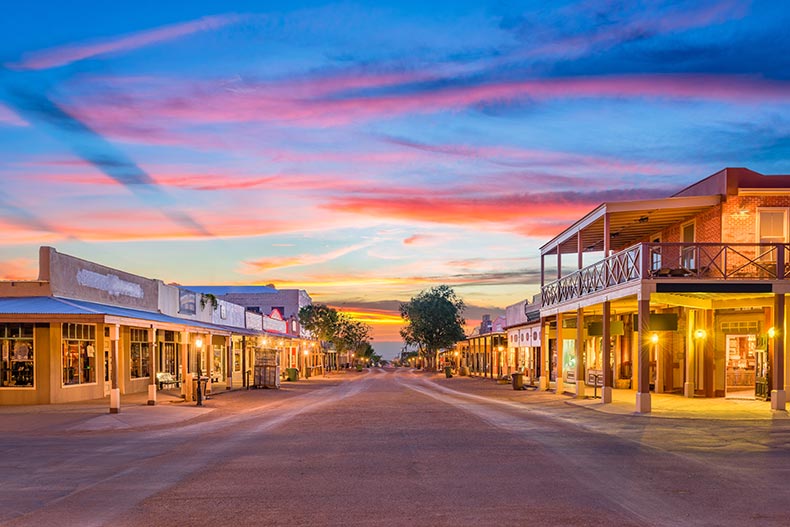
The cost of living starts with the cost of your housing, and in Arizona, the diverse housing options ensure a good supply of affordable homes. While there have been surges in prices in recent years, Arizona home prices are still more favorable compared to Florida and California.
Attracting Californian Retirees
One Arizona price surge a few years ago was caused by an influx of Californians retiring in the Grand Canyon State. Many 55+ homebuyers realized how much more they could get for their money in Arizona compared to California. However, in Sun City (the largest Arizona 55+ community), you can still find homes for under $100,000.
The cost of living was another reason why so many Californians decided to move to Arizona. Although the overall cost of living in Arizona is pretty much the national average, it’s one-third cheaper than California.
Arizona Taxes
Property taxes in Arizona are assessed on a county-by-county basis, so there are variations. However, the average property taxes are one-third less than the national average. There are also exemptions available for qualifying widows, widowers, disabled people, and low-income seniors on fixed incomes.
Social Security retirement benefits are not taxed in Arizona. Although other forms of retirement income are taxed, the tax rates are lower than in other popular retirement states. There’s also no inheritance tax in Arizona.
Groceries, Health Care, and Utilities
The cost of groceries in Arizona is lower than the national average thanks to favorable growing conditions, local farms, and easy access to California and Mexico. The cost of health care varies by region, but in Phoenix, it’s lower than the national average, and in Tucson, it’s even lower than in Phoenix. Utilities tend to cost less too, thanks to the warm climate reducing heating bills as well as a lot of investment in renewable energy. Solar power is a common feature in Arizona homes and businesses.
Health Care
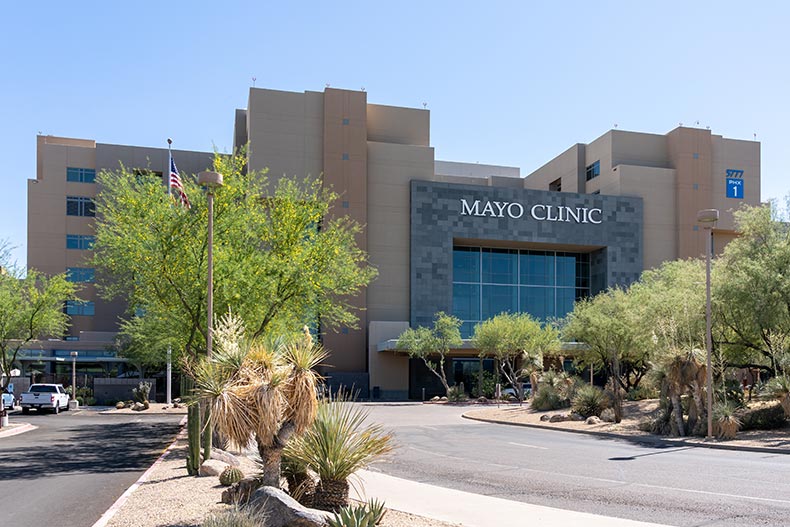
Arizona has some health benefits that are free to all and provided by nature. It’s well-established that sunshine is good for your health. It provides much-needed Vitamin D, can improve your mood, helps improve sleep patterns, and some studies say that it lowers blood pressure. The dry desert heat also helps people who suffer from arthritis, asthma, and allergies.
When it comes to paid health care, some of the top facilities in Arizona include the Mayo Clinic in Phoenix—the best in the state and nationally ranked for ten different specialties. Second only to the Mayo in state rankings is the Banner-University Medical Centre, also in Phoenix. The highest-rated facilities outside of Phoenix are the Banner-University Medical Center in Tucson and the Chandler Regional Medical Center in Chandler.
Active Lifestyle and Outdoor Recreation
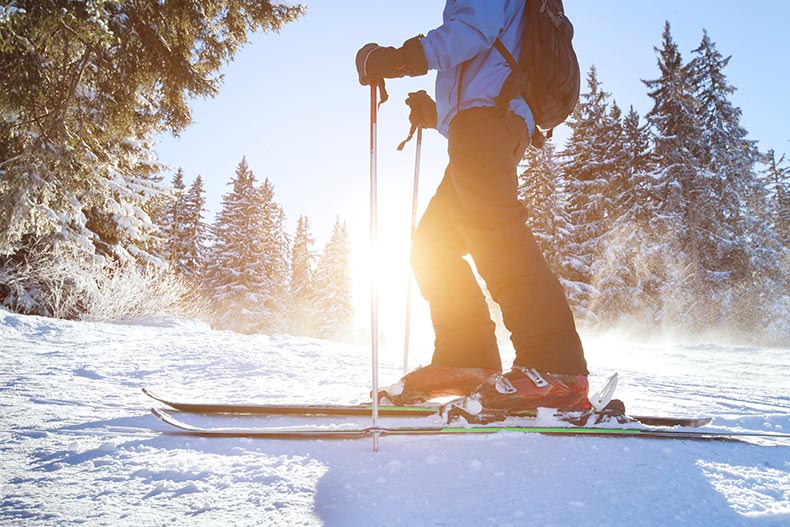
Arizona is certainly a good place to live if you aim to pursue an active lifestyle. Phoenix and Tucson, for example, both average well over 300 sunny days a year, making them two of the sunniest cities in the United States.
Arizona has three national parks. Hiking the Grand Canyon requires a certain level of fitness, but Petrified Forest National Park and Saguaro National Park both offer a range of trails for all fitness levels. Additionally, Arizona has 34 state parks, so no matter where you live, you’re never far from somewhere to enjoy nature.
Many people prefer to get their exercise on the golf course or by playing popular sports like tennis and pickleball. If you’re a fan of any of those, then Arizona is a good place to live during your retirement. There are almost 400 golf courses in Arizona, many concentrated in the Phoenix and Scottsdale areas. There are also many 55+ communities in Arizona with their own golf course, which could be a factor in choosing where to live. Other communities are big on pickleball. If you’re more of a tennis person, Sun City has 44 tennis courts and a tennis club.
Daily Life in Arizona

The Arizona daily routine depends on what time of year it is. In the winter, you might start with a leisurely coffee and breakfast, waiting for the day to warm up a little before getting active. In the summer, it’s the other way around. Get out early to beat the heat and then grab your breakfast and your cup of Joe. Most of the year, though, it’ll be a slow start with breakfast on the patio, enjoying that beautiful weather.
Also, for most of the year, you can do your shopping and errands any time. Arizonans tend to be early starters though, so if you want to avoid the crowds, hit the stores a little later. With the favorable climate, you can do your shopping any time, and evenings are just as popular, especially in midsummer.
Afternoons can be spent playing sports, gardening, relaxing by the pool, or joining in the many classes and workshops in an active adult community. In the height of summer, you’ll probably huddle indoors with a good book and the AC on.
For much of the year, the evenings are still warm enough to indulge in outdoor activities. Many residents dine al fresco or play tennis or pickleball on illuminated courts. Also, many communities organize events, like movie nights, or have clubs that arrange trips to the theater or concerts.
Unique Challenges
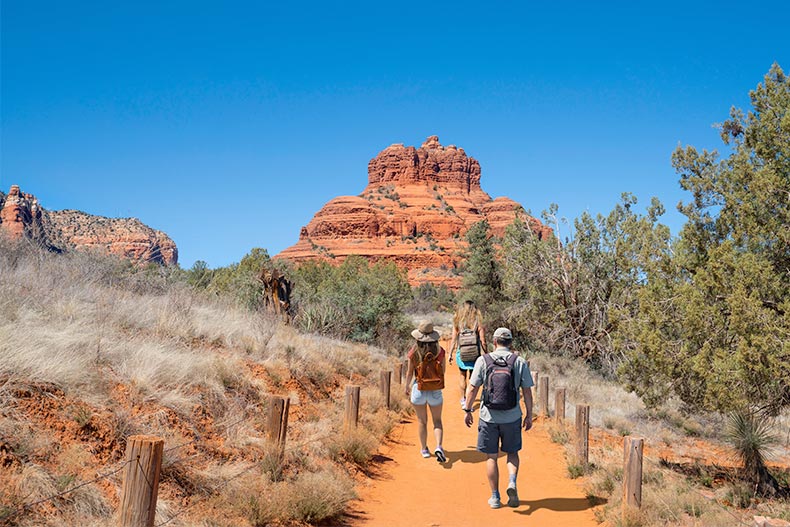
There’s no doubt that one of the main challenges facing people when they move to Arizona is the extreme summer heat. Some people cope better than others, and of course, it depends on where you live. If possible, you might want to spend some time as a snowbird first, perhaps staying until the end of May. Temperatures usually start to hit the hundreds by the end of that month, giving you some indication of what to expect, though you’ll only really know if you live in Arizona through an entire summer, monsoons and all.
Water Shortages
At the moment, Arizona doesn’t experience water shortages, but it’s something to be aware of for the future. Right now, 41% of Arizona’s water comes from underground aquifers, which are topped up annually by the torrential summer monsoons. Another 36% is taken from the Colorado River, under an agreement called the Colorado River Compact of 1922. However, there’s an ongoing debate as to whether this agreement needs to be changed. Ironically, due to the original division, Arizona seldom experiences water shortages, but Colorado does. In the future, this agreement may have to change.
Traffic and Crowds
Public transportation is not as extensive in Arizona as it is in many other states. The exceptions are the two big cities of Phoenix and Tucson, but even their public transport isn’t as widespread as you might expect.
Arizona also experiences seasonal population swells. Snowbirds typically arrive from January through to March or April. Populations in some communities can double or more during these months. That can put a strain on some services, most notably for sports. When the snowbirds leave, some communities can seem like ghost towns, especially when the heat builds up and people spend more time indoors.
55places Is Here to Help You Retire in Arizona!
Despite some drawbacks, Arizona remains one of the most desirable retirement locations in the country. The climate is one of the best anywhere for encouraging an active lifestyle, the cost of living is low, and facilities cater to an active adult population.
However, that summer heat could be a deal-breaker for some people thinking of moving to Arizona. It’s a good idea to spend some time in Arizona year-round to get a feel for what it’s like. This can also help you find a part of the state, and a 55+ community, that will make Arizona a good place to live during your retirement years.
Contact 55places.com today to explore the best 55+ communities in Arizona and start planning your move!

